Marketing today isn’t about who shouts the loudest, but more about who helps the most.
That’s the core of inbound marketing: creating valuable content that attracts potential customers by answering their questions, solving their challenges, and earning their trust.
As people spend more time researching online before making decisions, inbound has become one of the most reliable ways to reach them. It aligns marketing with how buyers actually behave: they search, compare, and engage at their own pace.
Great inbound marketing helps businesses cut through noise, improve visibility through SEO, and build relationships that last beyond a single campaign.
What you will learn
- How to expand inbound marketing beyond traditional blogs
- Improve visibility and help your content rank for intent-based queries, not just keywords.
- Personalize the buyer’s journey using automation and data-driven insights to turn visitors into long-term customers.
1. Create content formats beyond traditional blog posts
For years, blogs have been the backbone of inbound marketing. They’re great for search engine optimization, education, and brand storytelling, but relying on them alone limits reach.
Audiences today consume information across multiple formats, and your inbound strategy should adapt to those preferences.
Companies like HubSpot recognized the benefits of inbound marketing early. Instead of focusing solely on blog posts, they introduced interactive tools such as their Website Grader and live webinars that attract customers. These formats work because they meet the audience where they are and provide value beyond reading.
For example, Surfer's Academy offers free online marketing webinars and courses that not only assist customers but also serve as a great way to raise brand awareness by highlighting our tools.
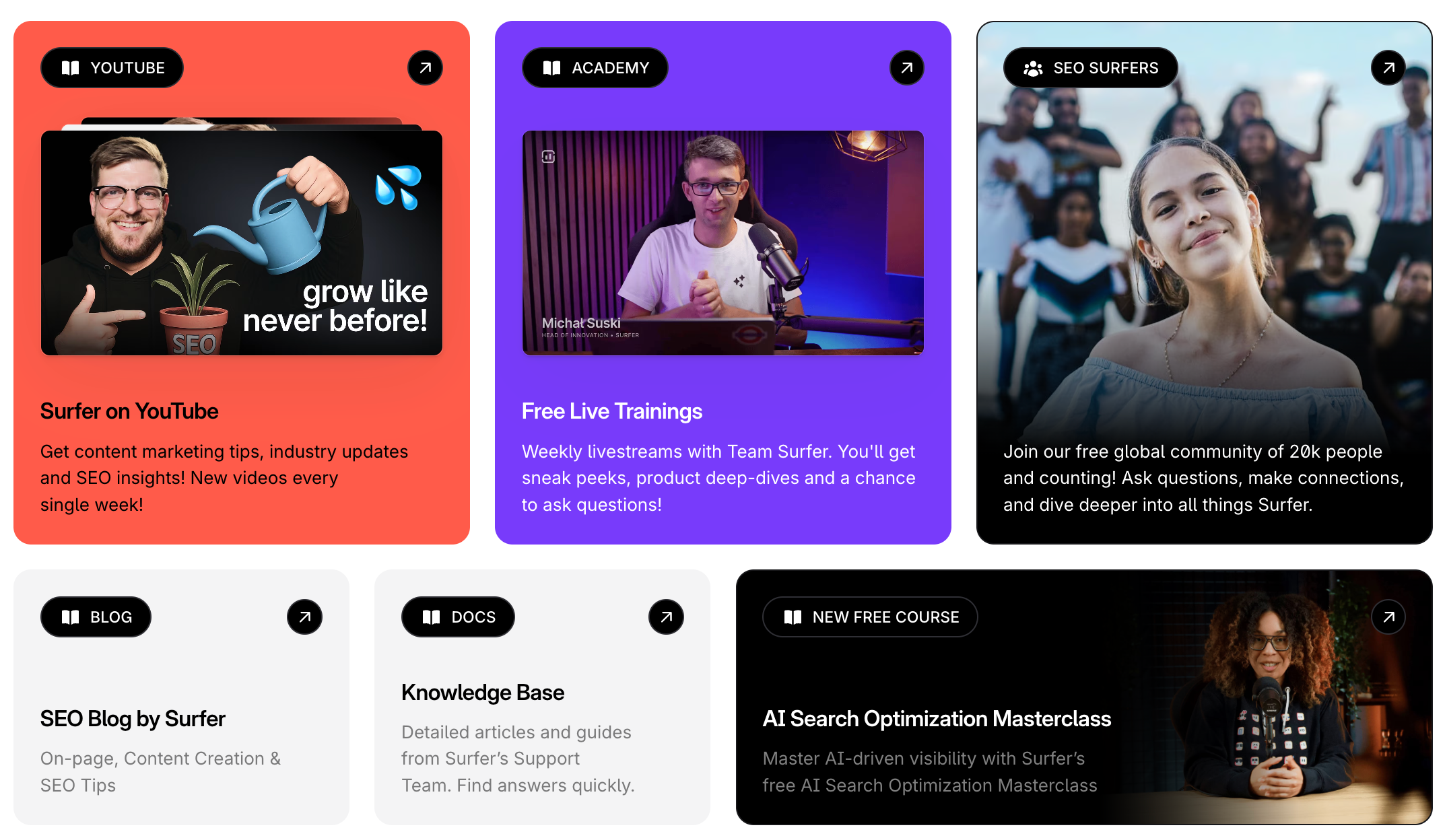
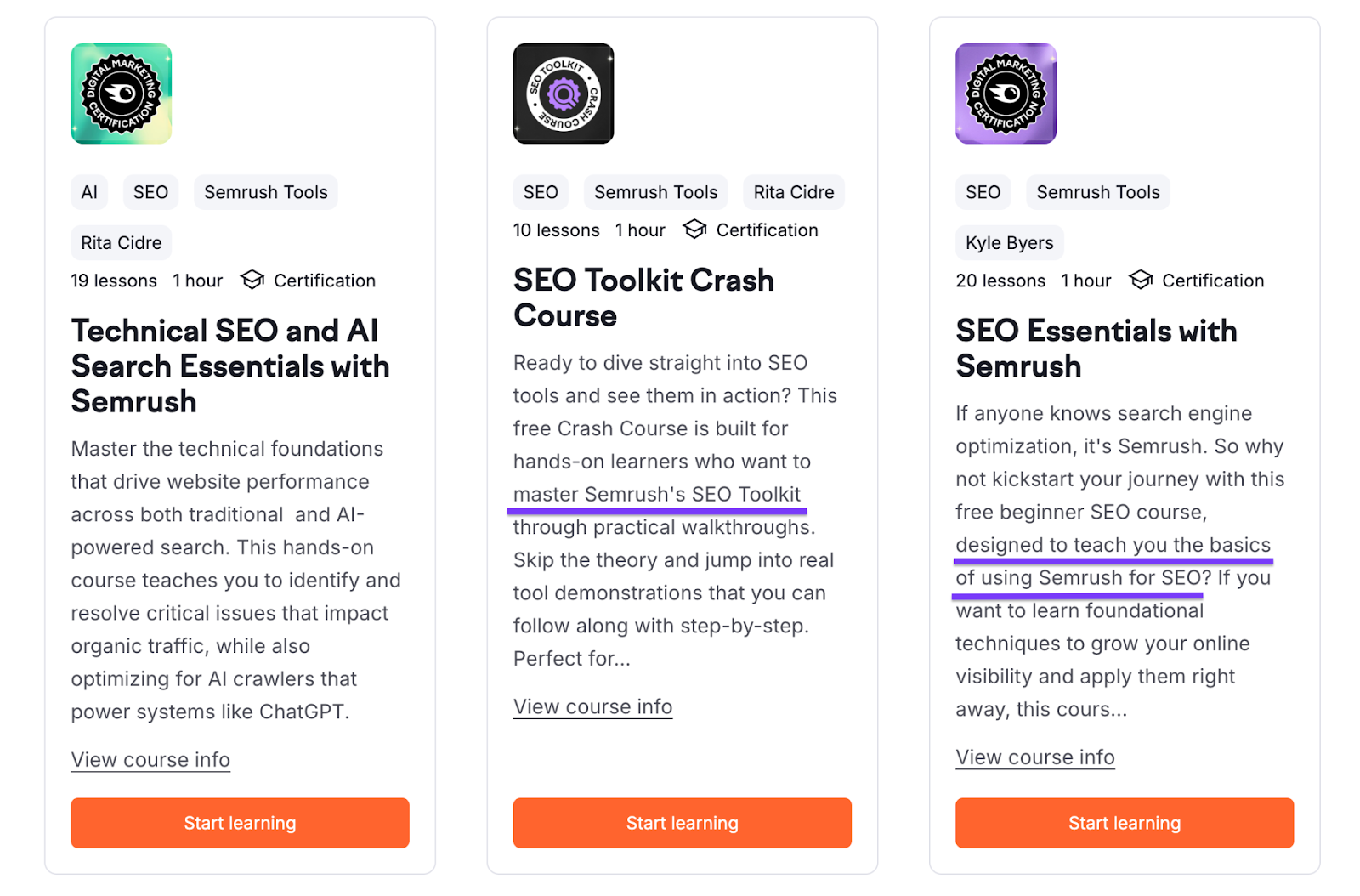
To strengthen your inbound marketing campaigns, consider formats that build customer engagement, like:
- Video tutorials and explainers to simplify complex topics and improve retention, especially on YouTube and LinkedIn.
- Podcasts on Spotify or Apple that help brands reach audiences during commutes or workouts, especially for those moments blogs can’t reach.
- Interactive content, such as calculators, quizzes, or downloadable templates, can generate leads while offering something valuable.
- Webinars and live sessions to create real-time engagement and authority, especially when hosted through channels like LinkedIn Live or Zoom.
What makes these formats work isn’t just variety, but more about serving relevance at the right place and time. For example, if you notice your target audience consumes more short videos than podcasts, then it’s best not to spend too much time on the latter.
Before creating, identify your target audience’s needs, map content to the user journey, and ensure every asset serves a purpose.
2. Optimize for SEO and semantic search
No inbound strategy succeeds without a strong SEO foundation. Optimization ensures your content surfaces at the exact moment your audience is searching for it, and for that to happen today, intent matters more than SEO keywords alone.
Search engines today focus on intent — what a person actually means when they search.
For instance, “buy running shoes” signals a ready-to-purchase user, while “best running shoes for beginners” indicates someone still researching. Optimizing for search intent helps you connect with both, using the right content format and message for each stage of the buyer’s journey.
Another essential factor is topical authority. Covering related topics in depth tells search engines your site is a trusted source. Instead of creating standalone articles, build content clusters around core themes.
Using natural language and semantic variations allows your content to appear across a broader range of searches — including AI-driven results in tools like ChatGPT, Perplexity, and Google AI Overviews.
A great example of this in action is Axion Now Events, one of the UK’s largest live event organizers. With no prior SEO experience, they partnered with Ditto Digital to launch their first content-led strategy — powered by Surfer.
With Surfer’s Content Editor, their team compared their pages with top results, filled missing keyword gaps, and refined their content using live suggestions. Their optimized pages reached a Content Score of 87. Within six months, they achieved:
- 677% growth in organic traffic
- 38% increase in like-for-like sales
- Higher engagement from SEO than from email or social channels

Their results show how structured, data-backed content creation can transform visibility. Creating quality content with semantic SEO, and consistent topical coverage helps brands compete in search, even against established players.
3. Personalize experiences with customer journey mapping
Personalization is what turns inbound marketing from generic messaging into meaningful customer relationships. It’s the difference between sending the same email to everyone and crafting experiences that reflect your target audience’s needs at each step of their buyer’s journey.
The process starts with defining buyer personas — detailed profiles of your ideal customers based on demographics, behaviors, and pain points. These personas help you understand not just who your audience is, but why they make decisions and what kind of content they trust.
Plus, it's a great step towards account based marketing for your sales process.
Tools like Xtensio’s Persona Builder make this process easier.
It lets marketers create visual, easy-to-share persona templates that outline an audience’s goals, challenges, motivations, and buying triggers. You can customize fields, add real research or interview data, and keep your team aligned on who you’re targeting and why.
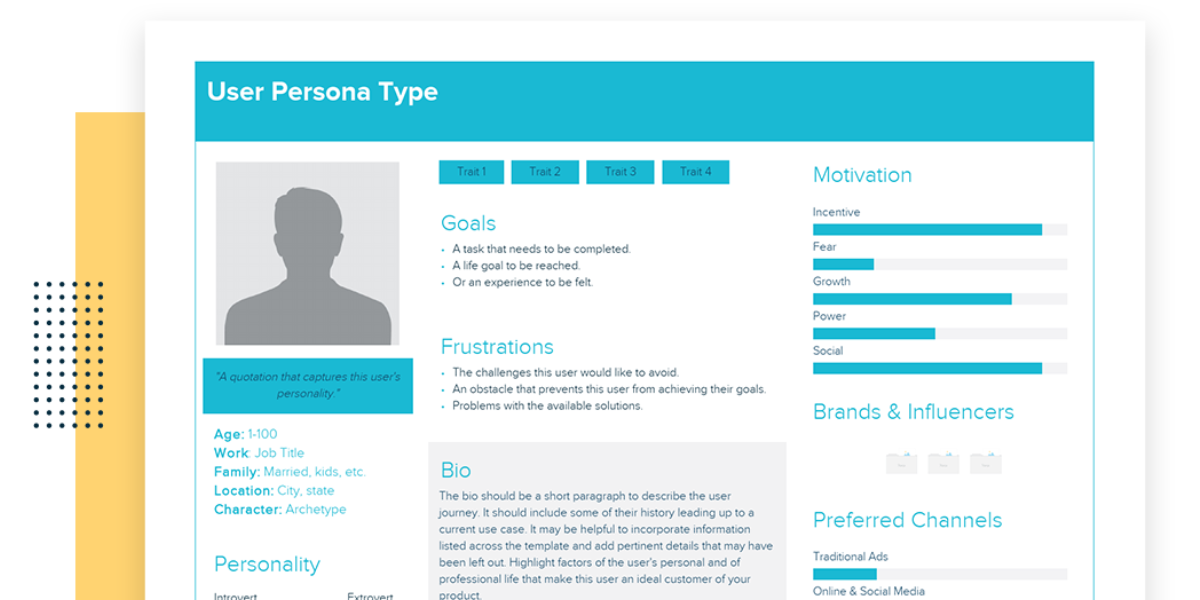
Once your personas are defined, the next step is mapping the buyer’s journey, which is the three stages people go through before making a purchase:
- Awareness: The prospect recognizes they have a problem and seeks solutions. Here, creating valuable content like blogs or videos helps attract potential customers through search engine optimization and social discovery. For example, a “Guide to Improving Organic Traffic” blog introduces your brand early in the research process.
- Consideration: The buyer starts comparing solutions. You can nurture them with case studies, downloadable templates, or webinars — content that builds trust and authority. A blog reader who clicks through to a case study is already signaling deeper interest.
- Decision: The prospect is ready to act. This is where product demos, success stories, or targeted email campaigns help convert interest into action.
Each stage needs tailored messaging.
This means your calls to action, subject lines, and even landing page content should evolve based on intent.
For example, Amazon’s “Recommended for you” section adjusts dynamically based on browsing history, while Spotify’s Discover Weekly playlist uses behavioral data to personalize listening experiences — both are great examples of real-world journey mapping in action.
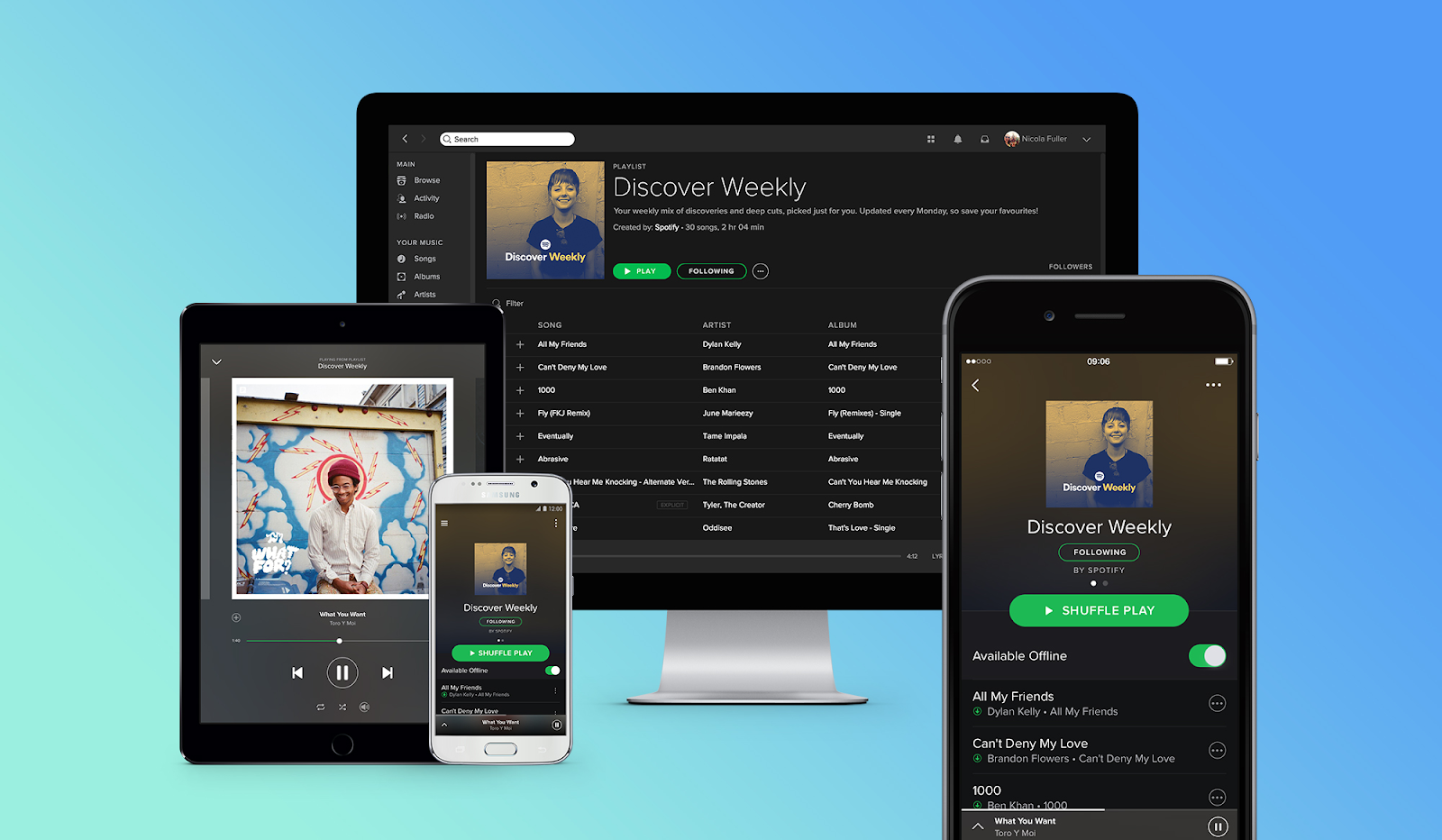
Scaling this level of personalization is where marketing automation tools come in.
Platforms like HubSpot CRM and ActiveCampaign allow you to segment audiences, trigger personalized email marketing workflows, and deliver relevant content automatically based on user behavior.
By combining detailed personas, mapped journeys, and automated delivery, your inbound marketing campaigns can move beyond generic touchpoints. This helps build lasting relationships, improving customer satisfaction, and increasing conversions across your marketing strategy.
4. Nurture leads using email marketing and automation
Attracting potential customers through inbound marketing is only the first step. Turning those leads into loyal customers takes consistent nurturing, which is where email marketing and automation workflows make the difference.
They help you deliver relevant content to potential customers, at the right time, automatically.
To build an effective workflow, start by understanding who your audience is and how they engage with your brand. Here’s a framework to get started:
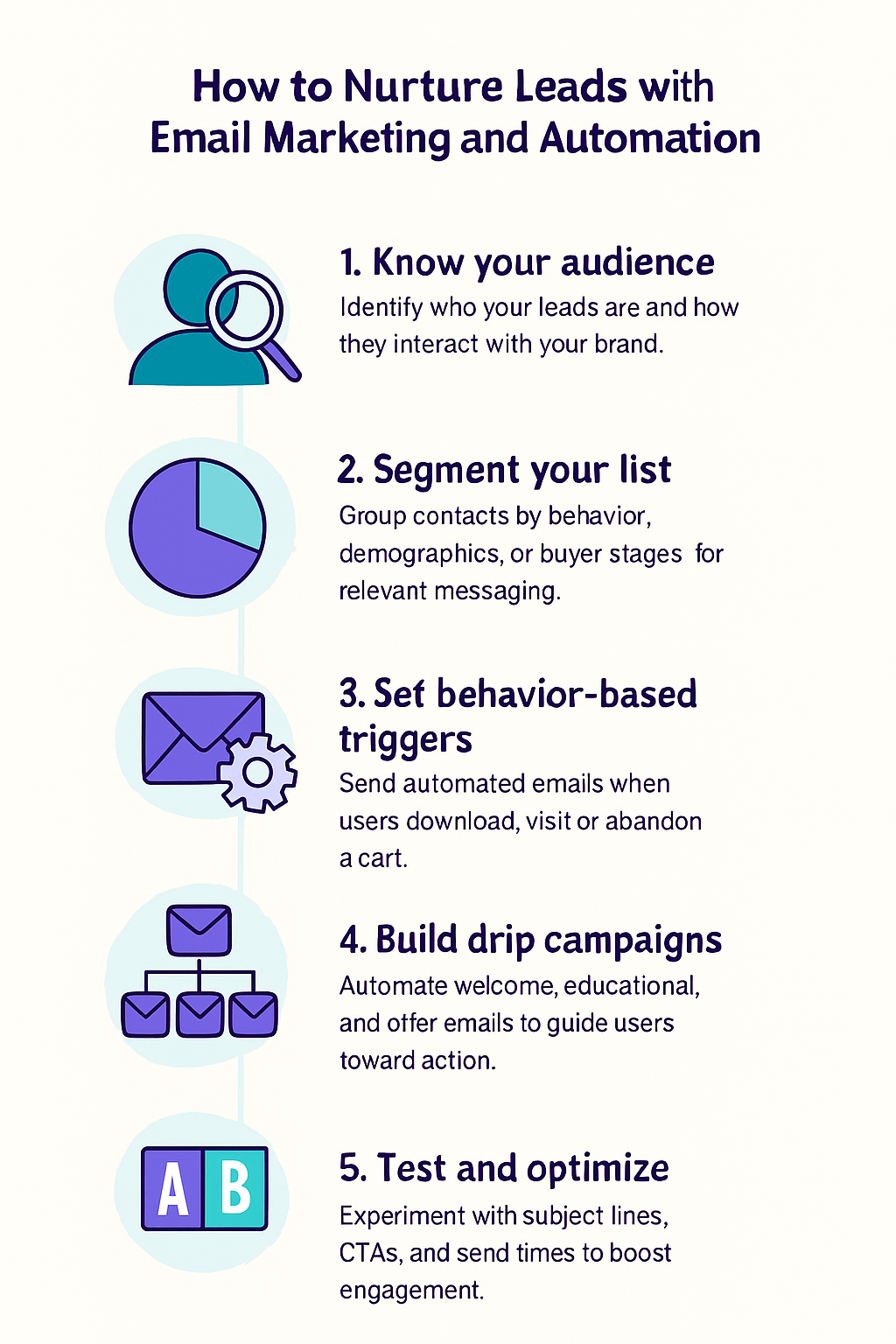
- Segment your buyer personas for relevance
Segmentation is the foundation of effective lead nurturing. Instead of sending one generic message to everyone, group your audience by behavior, demographics, or stage in the buyer’s journey.
For example, repeat buyers might get loyalty offers or early access to new products, while new users receive quick-start tutorials. Segmentation keeps communication personal (a key factor in engagement and conversions) and sets the stage for automation to do its work.
- Use behavior-based triggers to re-engage leads
After segmentation, behavior-based triggers keep your emails timely and contextual. These triggers automatically respond to user actions, like visiting a product page, downloading a guide, or leaving a cart behind.
Amazon’s cart reminder emails are a simple but powerful example.
They re-engage shoppers with personalized follow-ups that prompt completion. Similarly, B2B marketers might trigger a “Getting Started” guide after a webinar signup or a product demo offer after multiple site visits.
- Create drip campaigns that educate before selling
Drip campaigns nurture leads through a sequence of emails that guide them from awareness to action. A typical flow starts with a welcome message, followed by a few educational emails, and ends with a targeted offer or demo invite once trust is built.
Mailchimp lets you visually map out automated paths with branching rules, filters, and tagging logic, like triggering follow-ups depending on email opens or link clicks.
Kit is another great tool that supports trigger-based automations and tagging rules, allowing you to move subscribers through sequences based on their actions (e.g., forms filled, tags added) while keeping your workflows clear and organized.
- Refine with A/B testing
To improve performance, test and iterate. A/B testing helps you discover which subject lines, CTAs, and send times perform best.
For example, personalized subject lines can boost open rates by up to 26% — small changes that make a measurable impact.
Consistent testing keeps your email marketing strategy evolving with your audience’s behavior, ensuring your inbound marketing tactics remain both effective and relevant.
5. Measure your inbound marketing strategy with data and analytics
Data helps you understand what’s actually driving growth and where your inbound marketing efforts need adjustment.
Start by focusing on the metrics that matter most. The key inbound KPIs every marketer should track include:
- Website traffic: Measures how well your content marketing attracts new visitors through organic search, social media, or email campaigns.
- Conversion rate: Shows how effectively those visitors take action, whether downloading a resource or booking a demo.
- Leads generated: Helps you gauge how strong your inbound marketing campaigns capture interest.
- Customer acquisition cost (CAC): Tells you how efficiently you’re turning leads into customers.
- Return on investment (ROI): Confirms whether your inbound strategy is driving profitable business growth.
But metrics alone don’t show how conversions actually happen. That’s where attribution models come in. They help you see which touchpoints contribute to a lead’s journey:
- First-touch attribution highlights what first brought a user in.
- Last-touch attribution shows what closed the deal.
- Multi-touch attribution spreads credit across multiple steps in the buyer’s journey, giving a more realistic view of what drives results.
For example, your sales team may find out through multi-touch analysis that blog content influenced nearly 40% of assisted conversions, even though blog posts rarely receive last-click credit simply because most people dont make up their mind after reading an article.
To track and visualize this data, tools like Google Analytics 4 (GA4), HubSpot, and Hotjar can make your work easier:
- GA4 reveals how users move through your site and which channels convert best.
- HubSpot links marketing performance with CRM data, showing which inbound tactics drive actual pipeline impact.
- Hotjar adds behavioral insights through heatmaps and session replays, revealing what visitors engage with most on your page.
If you’re new to analytics, Google Analytics Academy is a solid place to start learning how to turn metrics into meaningful action.

The most important part, though, is iteration. Review data regularly (monthly or quarterly) to identify trends and adjust quickly.
Finally, make your insights easy to understand. Simple dashboards (whether in GA4 or HubSpot) can visualize performance at a glance. When results are clear, it’s easier to make decisions that move your inbound marketing strategy forward.
6. Leverage social media to amplify inbound reach
Social media strengthens your inbound marketing strategy by taking your content to where your audience already is. But every platform works differently, so your approach should, too.
LinkedIn is best for thought leadership, sharing short insights, original opinions, and practical takeaways to build credibility and start conversations. Instagram suits visual storytelling. Behind-the-scenes social media posts or short reels help people connect with the human side of your brand.
TikTok thrives on personality and trends. Duolingo’s TikTok strategy is a great example of how leaning into humor and trending cultural moments can build awareness faster than any search ads.

If you’re investing in social media marketing, tools like Hootsuite and Brandwatch help track brand mentions and audience sentiment, so you can respond quickly and spot new opportunities. These social listening tools are great if you’re still working on brand positioning.
You can also get more out of what you already create. Repurpose existing content instead of starting from scratch:
- Turn a blog into a LinkedIn carousel that summarizes key insights.
- Rework a long post into a short TikTok video.
- Design an infographic from an existing article’s main points.
If you look at big industry brands, you’ll notice how user-generated content (UGC) builds trust and even virality very quickly. For example, Starbucks’ #RedCupContest worked because customers became the storytellers — and people trust people more than traditional marketing tactics.

This campaign successfully utilizes social media to enhance brand visibility and customer interaction, turning a simple holiday tradition into a compelling marketing strategy. Plus, it also turns existing customers into trusted brand advocates that attract customers.
Finally, influencer marketing is a great step to building customer relationships organically. They often drive higher engagement and stronger ROI than outbound marketing efforts as it creates more trust and connection for audiences.
7. Build authority through thought leadership content
Thought leadership means becoming a trusted voice in your field as someone people turn to for expertise, not just information. It’s about publishing content that offers original ideas, new data, or practical insights that help others think differently.
True thought leadership doesn’t repeat what’s already online; it adds something new, credible, and genuinely useful.
One of the best ways to build that authority is through research-based or experience-driven content. Long-form pieces like industry studies, white papers, and customer case studies establish credibility because they’re grounded in real data and outcomes.
They also attract backlinks and citations, strengthening both your reputation and your site’s search engine optimization.
A strong example is HubSpot’s annual State of Marketing report. It uses proprietary research to set industry benchmarks, making it one of the most cited resources in digital marketing — and positioning HubSpot as a thought leader, not just a software company.
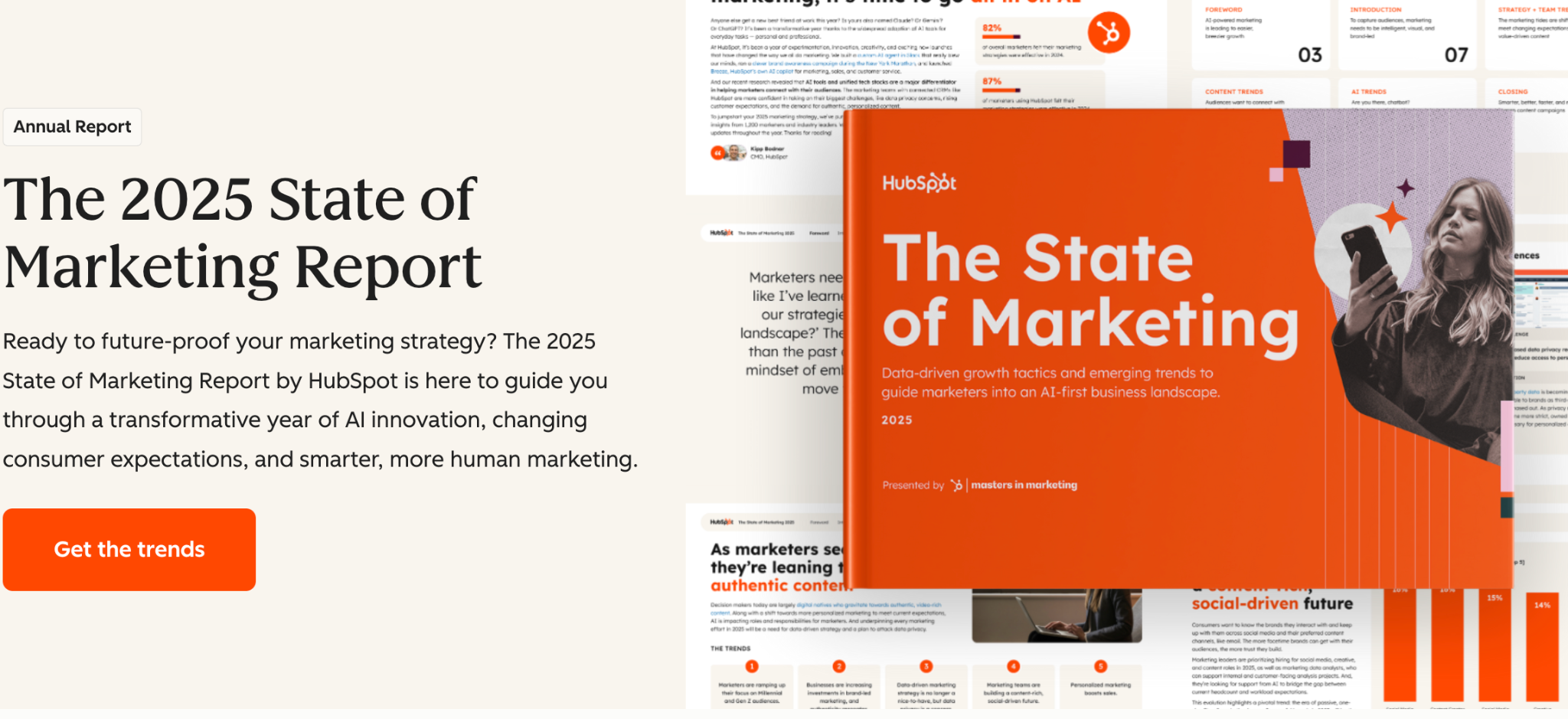
You can also extend your reach by guest posting on high-authority sites such as Forbes, Entrepreneur, or Harvard Business Review.
Publishing in these outlets puts your ideas in front of established audiences and aligns your brand with respected industry voices. Many founders use this approach to strengthen credibility while expanding visibility beyond their owned channels.
Regular publishing, with a clear and recognizable brand voice, helps your audience see you as reliable, not occasional. The more you show up with substance, the stronger your authority becomes.
Some of today’s most influential voices demonstrate this well by using their LinkedIn not just for branding, but building authority:
- Sara Blakely, founder of Spanx shares personal, relatable stories about risk-taking and leadership that humanize her expertise.
- Simon Sinek consistently offers clear, purposeful insights on motivation and management that invite discussion.
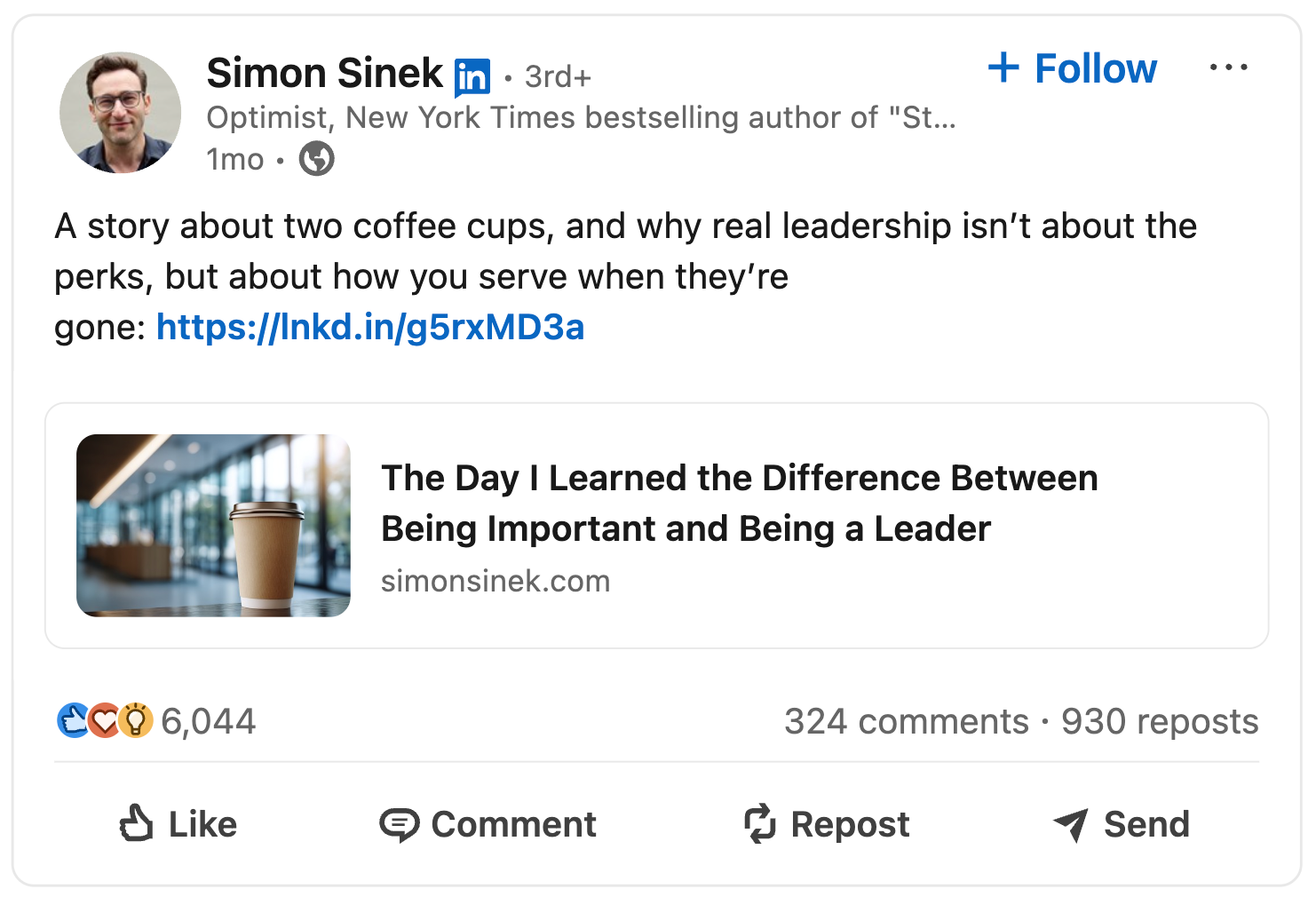
Each of them builds thought leadership by balancing authenticity with expertise — creating content that teaches, inspires, and stays true to their voice.
8. Scale your inbound marketing efforts with the right content tools
Scaling your inbound marketing strategy effectively means building a core stack of tools that helps you stay organized, automate repetitive work, and keep quality consistent.
Start with a strong foundation using a CRM like HubSpot to centralize leads, automate follow-ups, and connect marketing with sales. Once your audience data and workflows are in place, the next step is to strengthen how your content is planned and produced.
Surfer gives content teams a framework for creating pieces that are both well-researched and optimized for search. The Content Editor analyzes top-performing pages for your target keywords and offers clear, data-backed suggestions to guide structure, tone, and relevance.
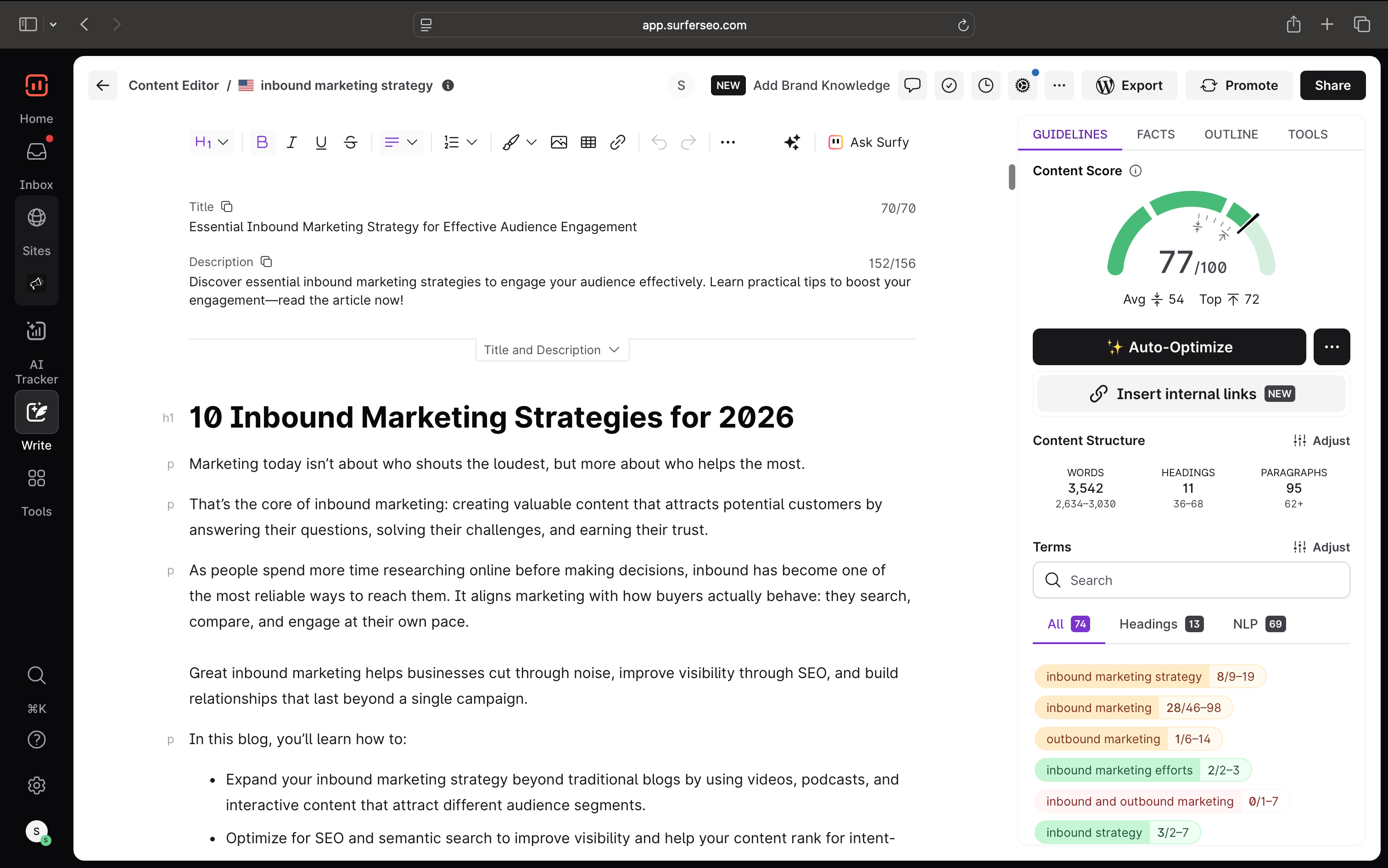
Surfer's suite of tools offers a complete content workflow so you can assess, create, and measure what needs to be improved or expanded to make your inbound marketing work.
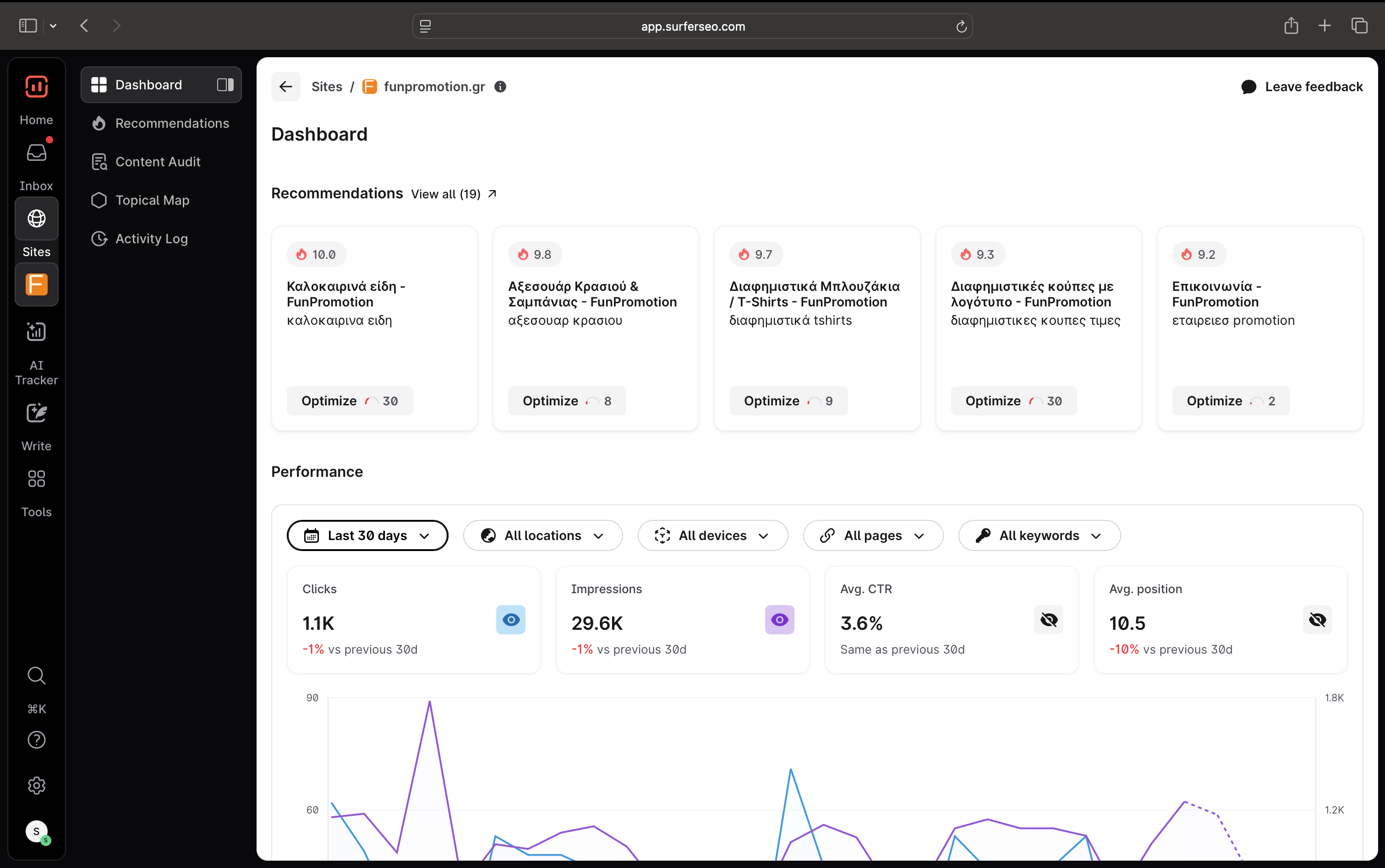
You can even use ChatGPT to generate first-draft ideas or outlines, and then refine them using Surfer’s insights to ensure the final version meets SEO goals.
To keep this entire workflow on track, tools like Asana, Notion, or Trello make it easier to manage calendars, assign ownership, and track progress. These help connect your CRM, content planning, and publishing so that everyone stays aligned.
Remember, you don’t need dozens of tools for an effective inbound marketing strategy — just a few that work well together. A CRM to manage relationships, a content optimization platform like Surfer to guide creation, and a collaboration tool to manage tasks.
Once you’ve mastered those, your team can scale output confidently without losing quality.
9. Avoid common mistakes beginners make
Inbound marketing techniques pay off when done consistently and strategically. But many teams lose momentum by repeating a few avoidable mistakes. Here’s what to watch out for:
- Focusing on quantity over quality: Publishing more doesn’t automatically mean better results. Ten average posts won’t outperform one high-quality, well-researched piece. Depth and insight build authority; surface-level content only adds noise.
- Ignoring analytics and reporting: Without data, you’re flying blind. Tracking metrics like traffic, conversions, and engagement helps you identify what’s working and what’s not. Neglecting analytics means wasting effort on content that may never perform.
- Skipping audience research: Writing without understanding your audience’s needs leads to content that misses the mark. Build buyer personas, analyze search intent, and use insights from tools like Google Search Console to create content that genuinely helps readers.
- Misaligning with the buyer’s journey: Great top-of-funnel content attracts traffic, but it won’t convert if there’s nothing to guide readers further. Without middle-funnel resources like case studies or comparison guides, that audience will bounce before they buy.
- Inconsistent publishing schedules: Momentum matters. Irregular posting hurts both audience trust and SEO performance. Choose a realistic cadence, weekly, biweekly, or monthly — and stick to it.
Avoiding these mistakes helps you build a stronger inbound foundation where every effort compounds over time instead of starting from zero with each campaign.
10. Scale your content workflow
Successful inbound marketing strategies aren’t powered by more people or more posts; they’re powered by better workflows.
Start by making your process repeatable. Map out how ideas move from concept to publication: research, brief, writing, optimization, design, and distribution. When every step has a clear owner and timeline, content moves predictably and nothing falls through the cracks.
Next, connect creation with distribution and analysis. Plan promotion alongside production so every piece reaches its target audience through social media, email campaigns, or strategic internal linking. Then, use analytics tools to review what’s working and feed those insights back into your inbound methodology.
Teams that scale well adopt a “test, learn, and improve” mindset.
Instead of reinventing processes, they refine existing ones. A/B testing subject lines, comparing formats, or analyzing engagement trends keeps growth steady and data-informed.
A great example of scaling inbound marketing systematically comes from Buffer. Instead of relying on paid ads, Buffer used content as its main growth engine.
In its early years, the team focused on writing and guest posting on high-authority sites like Social Media Examiner and Treehouse. This approach helped them reach new audiences organically and position the brand as a trusted voice in social media strategy.
Over time, their own blog became one of the most-read marketing resources online, driving a significant share of Buffer’s user signups through inbound traffic.

And you can see the tangible effects of their inbound marketing approach through their transparent metrics dashboard.
This success didn’t come from one viral post; it came from a clear, documented system. Their team planned topics strategically, optimized each post for SEO, repurposed content across platforms, and learned from analytics after every campaign.
That’s the key to scaling inbound marketing content: consistency, not chaos.
Build a workflow that connects creation, distribution, and reporting and use data to improve what already works.
Key takeaways
Inbound marketing methodology succeeds when your content, tools, and data work together to attract, engage, and convert. Here’s what inbound marketing focuses on:
- Create value, not volume. High quality content that solves real problems will always outperform high-output publishing. Go beyond blogs posts by investing in videos, webinars, or interactive assets that meet your audience where they are.
- Optimize and personalize with intent. Use SEO and semantic search to reach the right people, then tailor your messaging to match each stage of the buyer’s journey. Tools like Surfer help align your content with search intent and performance data.
- Automate and analyze for smarter growth. Email workflows, segmentation, and behavior-based triggers keep leads engaged, while analytics and attribution models show which channels truly drive results for business functions.
- Use social media and thought leadership to expand reach. Repurpose existing content across platforms like LinkedIn or TikTok, encourage user participation, and share original insights that build trust and authority.
- Scale through systems, not speed. Streamline your process with a defined workflow for creation, distribution, and reporting. Companies like Buffer grew inbound systematically — documenting processes, repurposing strategically, and learning from data.
Successful inbound marketing doesn’t come from quick wins. It comes from consistent, strategic execution that’s powered by data, creativity, and a process built to scale.







